Article by Dagmara Genda // Sept. 27, 2019
From art occupations of empty apartment blocks to clandestine living room galleries, Berlin has a history of home exhibitions prompted by the city’s particular opportunities and hardships. Before commerce started exerting its homogenizing influence, the alternative space was the norm, creating the mythos that still draws artists here today. Nowadays, home galleries form less of a network than a series of singularities that sporadically come into existence—and often quickly cease to exist—in parallel to the “official” art world. In some cases, they can act as a stepping stone into the institutional art scene.
Annelies Kamen, co-founder of Berlin’s Crybaby, recounts that, in Chicago, where she studied, apartment galleries would find themselves on the agendas of curators on the hunt for emerging talent. The reasons why people transform their most intimate spaces into public venues remain, however, varied. They range from pragmatic business sense to uncompromising idealism. What they often have in common is a desire to cultivate a more intimate bond with their audience and a disdain for the hierarchies of the private gallery system. Despite this shared disdain they are not, as one might expect, polarized between commercial and non-commercial, as in the form of a grassroots protest against the slick machinery of the institution.
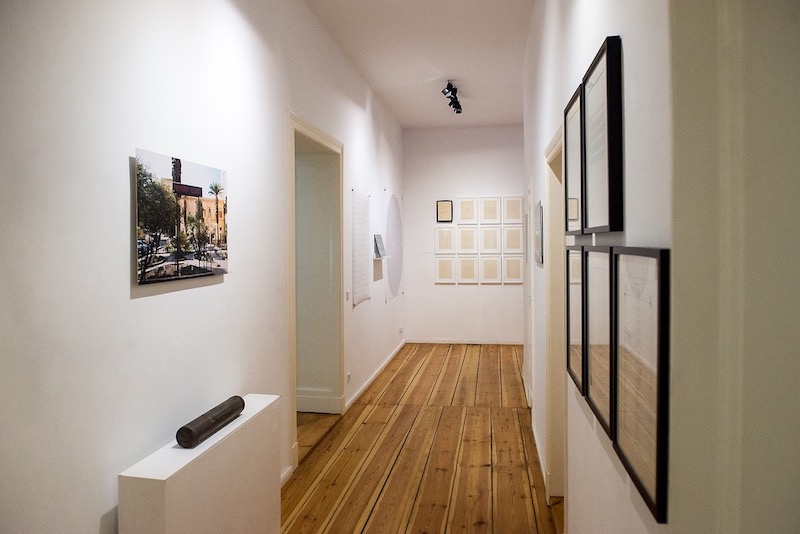
Arnold Dreyblatt: ‘Installation, Music, Performance’, 2019, installation view at Freehome // Photo by Daniel Zakharov
Though squatting artists formed the archetypal image of an anarchically creative Berlin, it’s the apartment gallery network from Soviet Moscow that forms the cultural roots of Vadim Zakharov’s Freehome. The artist was a key figure of the APTART “anti-shows” in the Soviet Union between 1982-84, a movement that formed the tail end of a tradition reaching back to the 60s, where artists like Ilya Kabakov or Irina Nakhova developed their total installations in response to cramped, communal apartments. In the U.S.S.R., private space was scarce and public space—understood à la Habermas rather than the 140 character tweet—was simply non-existent. Paradoxically, the private setting of the apartment formed the only public sphere where experimentation, debate and individual expression were fostered. And, though the exhibitions were regularly shut down by authorities, they were not a means of organized protest so much as a product of necessity, a sign of life sprouting between the cracks of brutalist concrete.
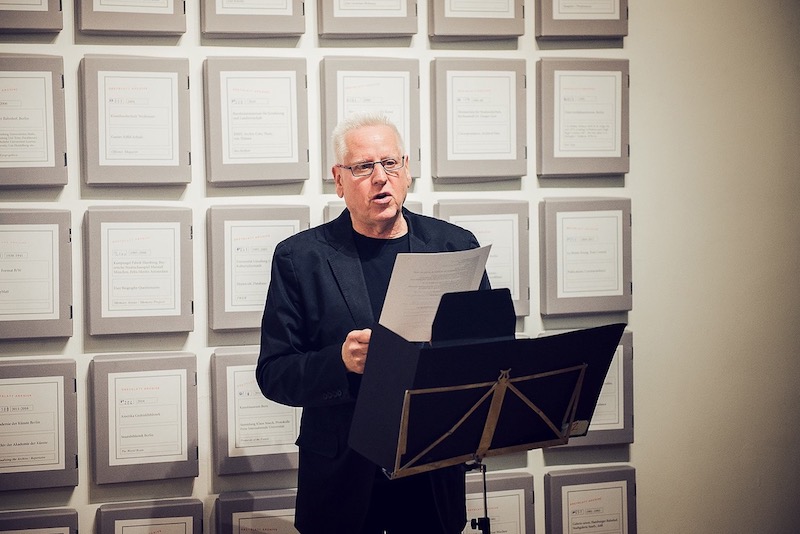
Arnold Dreyblatt: ‘Installation, Music, Performance’, 2019, installation view at Freehome // Photo by Daniel Zakharov
Despite the fact that the limitations of Soviet Russia do not exist in Berlin, Zakharov sees a niche to be filled. The market imposes a censorship of its own by confusing freedom of commerce for creative freedom. As a result, Zakharov makes a point of showing the less marketable, often hidden side of an artist’s practice. The recent survey of Arnold Dreyblatt’s work, for example, highlighted his visual and archival practices rather than the music for which he is widely known. Instead of staging a concert, Dreyblatt exhibited text works and did a reading. Another niche is the combination of emerging with established artists and arts professionals. Zakharov discovered Ireen Zielonka at an open studio event and invited established artists and curators from his network to respond to one of her drawings. The result was a catalogue under the rubric of “artist-to-artist,” which embodies the type of conversation he works to instill. Through personal choice, rather than economic selection, Zakharov brings people together on an equal, rather than hierarchical, plane.
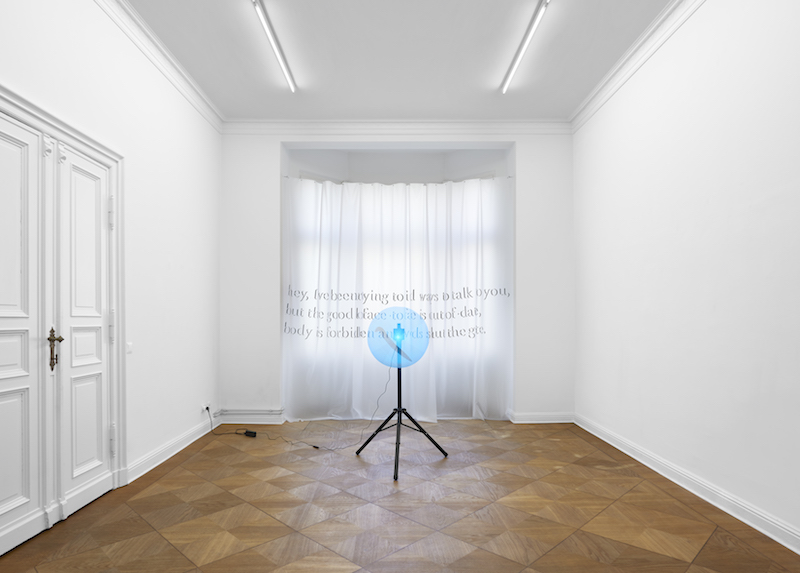
Li Shuang, ‘Intro to Civil War (Role Model),’ 2019 // Photo courtesy of the artist and Open Forum, Berlin
When it comes to his exhibition space, Zakharov shirks concepts like “alternative” or “protest.” The artist stresses that he is not against commercial galleries, but that he is trying to strike a much-needed balance in the off-kilter art ecosystem. On the flip side, the private galleries have found another type of balance in the home. Examples of spaces that exist or started in apartments include Future Gallery, DUVE, the Curve and Open Forum, among many others. In addition to the benefits enjoyed by any home business, like low overhead costs, the gallery system, with its emphasis on hospitality, benefits from the domestic environment. A gallerist is a special sort of salesperson; he or she must be an expert advisor, a host and sometimes even a friend, a function that goes hand-in-hand with the price tags pinned to many art objects.
Art comes packaged with relationships, histories and roots that are to reach beyond the impersonal world of mass-produced items. This is why the intimacy of the home can have an advantage over the professionalism of a commercial space—something that gallerist Nick Koenigsknecht, director of Peres Projects Berlin, and Hannes Schroeder-Finckh of Sprueth Magers, make use of in their home. Open Forum is a counterpart and a complement to the professional galleries both of them work at. Their self-proclaimed mandate is to act as a “platform of exchange for international artists and curators who feel they are under-represented.” Some of the artists who have shown there, like Beth Letain and Steffen Bunte, have gone on to join the roster of Peres Projects. Other invited guests, like curators Carson Chan and Clara Meister, have created site-specific shows, which included works made only for the home’s inhabitants. The home-cum-gallery thus allows for more flexibility: shows can be more experimental and not in the least concerned with marketability. On the other hand, it might also be a place where the commercial viability of artists can be tested without the brand of the gallery being at stake. In both cases, the home affords them the freedom of which Zakharov speaks. They can take risks without worrying about the bottom line.
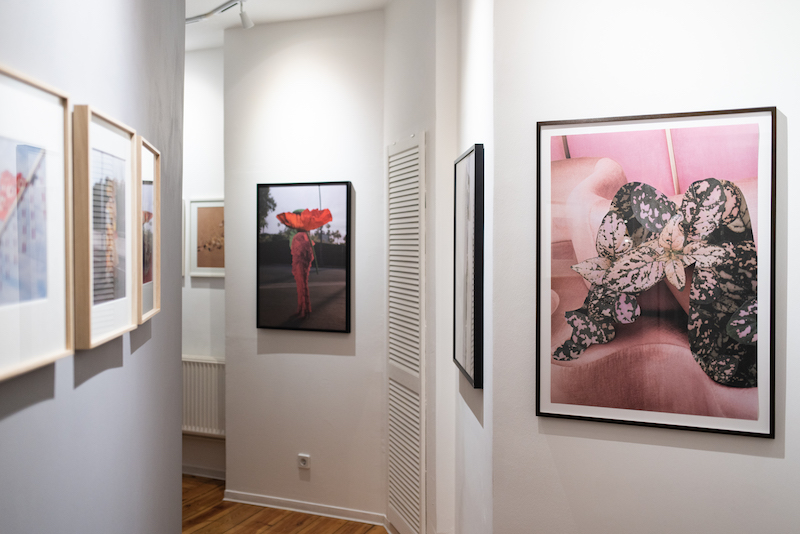
Anna Bu Kliewer: ‘Floral Faults,’ at the Curve, 2019 // Photo by Uli Kaufmann
Commercialism can be, however, a tricky line to navigate since it inevitably shapes its audience into consumers. In the case of Valerie von Meiss, founder of the Curve—a reference to her bending home hallway with a cheeky nod to the Barbican—she’s had visitors eye her lamps or make offers on her coffee table. While this confusion can be seen to blemish art’s hallowed reputation (or reveal an uncomfortable kernel of truth), it’s precisely this blurring between form and function that has helped develop her niche. She has done this with the lessons learned from her past life in marketing. Her USPS (unique selling points to the uninitiated): a focus on collage, a middle-priced artwork and a comfortable intimate setting. She’s even extended this logic to her fair booths, in which she has, sometimes to the displeasure of more traditional neighboring stands, painted her walls a lilac-grey and created a domestic stage-set.
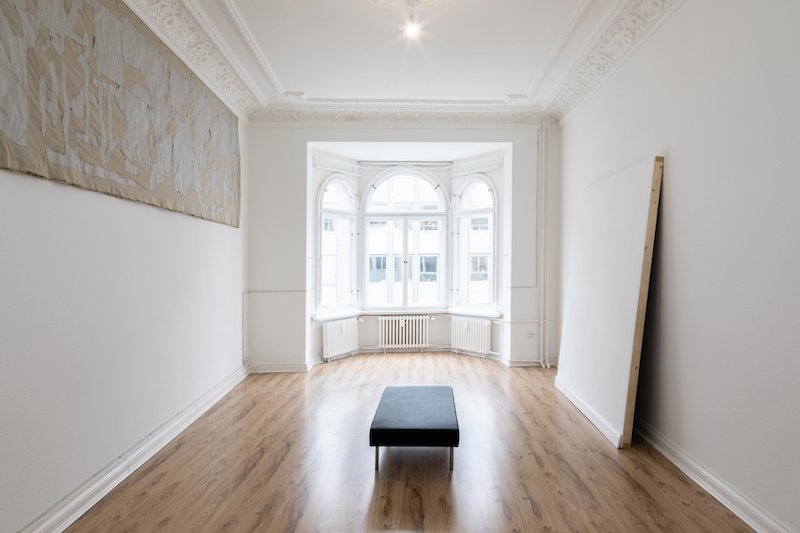
Lotta Bartoschewski, Olga Jakob, Dargelos Kersten, John Schulz, Erin Woodbrey: ‘Ain’t No Use’ organized by Samantha Bohatsch & Annelies Kamen
Ironically enough, this blurring between the art and the functional object is what might connect von Meiss’ approach to the project of artist Annelies Kamen. The intermittently running Crybaby, co-founded with Samantha Bohatsch, is the furthest thing from commercial, yet the two work hard to benefit their artists beyond mere exposure. Their first show, ‘Ain’t No Use,’ was funded by money Kamen received from compounded flight delays, which she used to cover installation costs and pay the artists an honorarium. The works in the exhibition responded directly to the home environment and, as such, blurred the line between form and function. A museum bench was simultaneously an art object, the moulding on the wall became a sculpture, or the wall itself became a site-specific piece. In this sense, artists reacted to the home the way many minimalists reacted to the white cube. While the latter’s forms veered toward the ideal, like Robert Morris’ L-Beams or Carl Andre’s floor pieces, the works in ‘Ain’t No Use’ embodied the vernacular of the apartment. The project led to an invitation to Berlin´s 2019 Project Space Festival, for which Kamen organized Kelly Lloyd’s ‘HELP (Is anyone an artist?).’ Riffing off the scenario of an emergency in which someone yells for a doctor, Lloyd staged an art emergency, for which one needs a different kind of specialist. Tongue-in-cheek, she asks what is an artist, and consequently, art, good for?
Perhaps what art is good for doesn’t depend so much on the type of work being made—whether it be a painting or a one-time performance—as much as the conditions of its presentation. The transformation of the apartment into exhibition space also helps to transform how we experience art. When one is hosted in a home, for example, one engages in a reciprocity that is not present in an institution. While this strategy is not without its drawbacks, the guest-host relationship is also a coded and exclusive one, it goes a long way to show us how to actively live with culture rather than to sporadically visit it in a space purged of everyday context.























